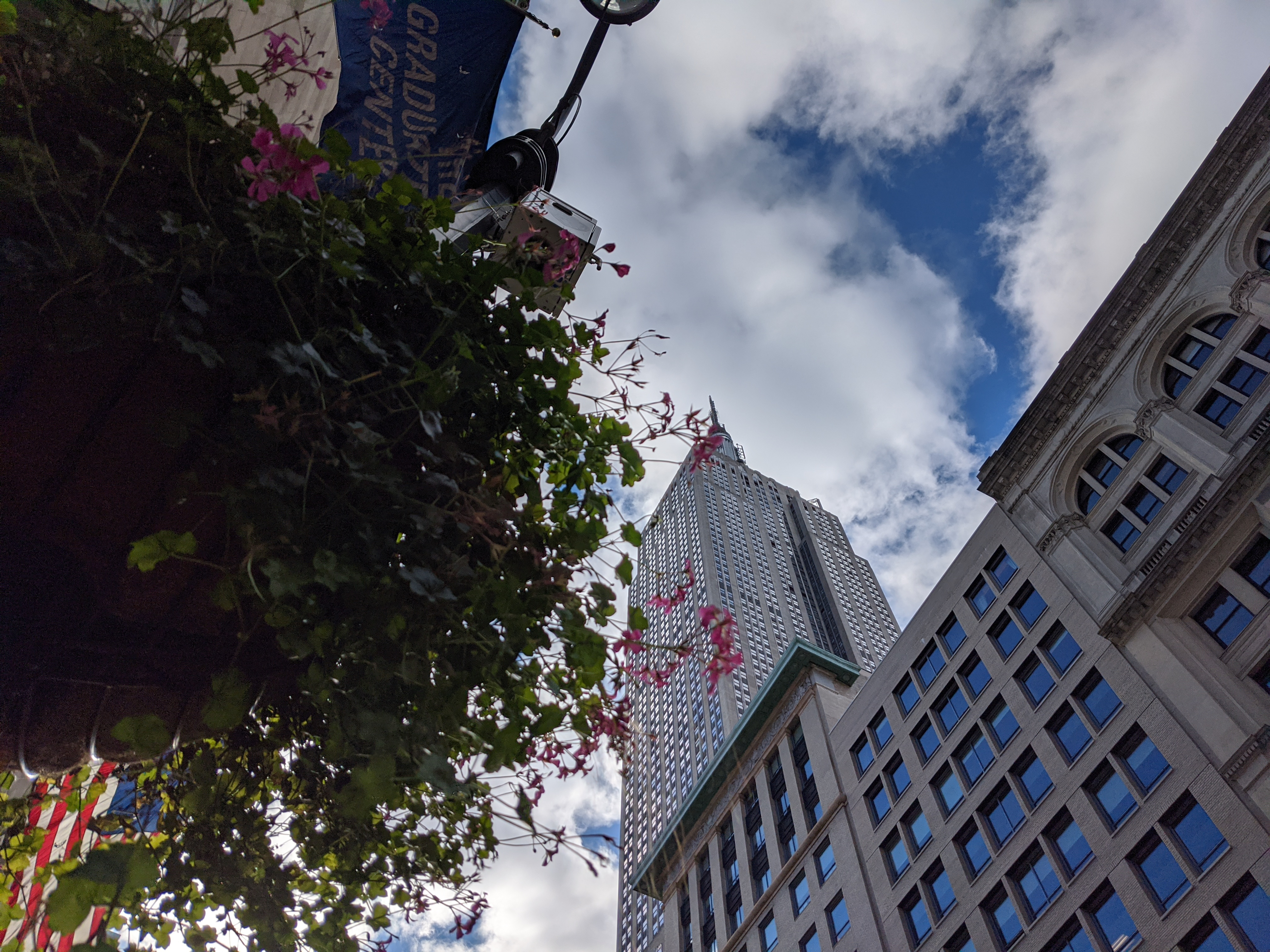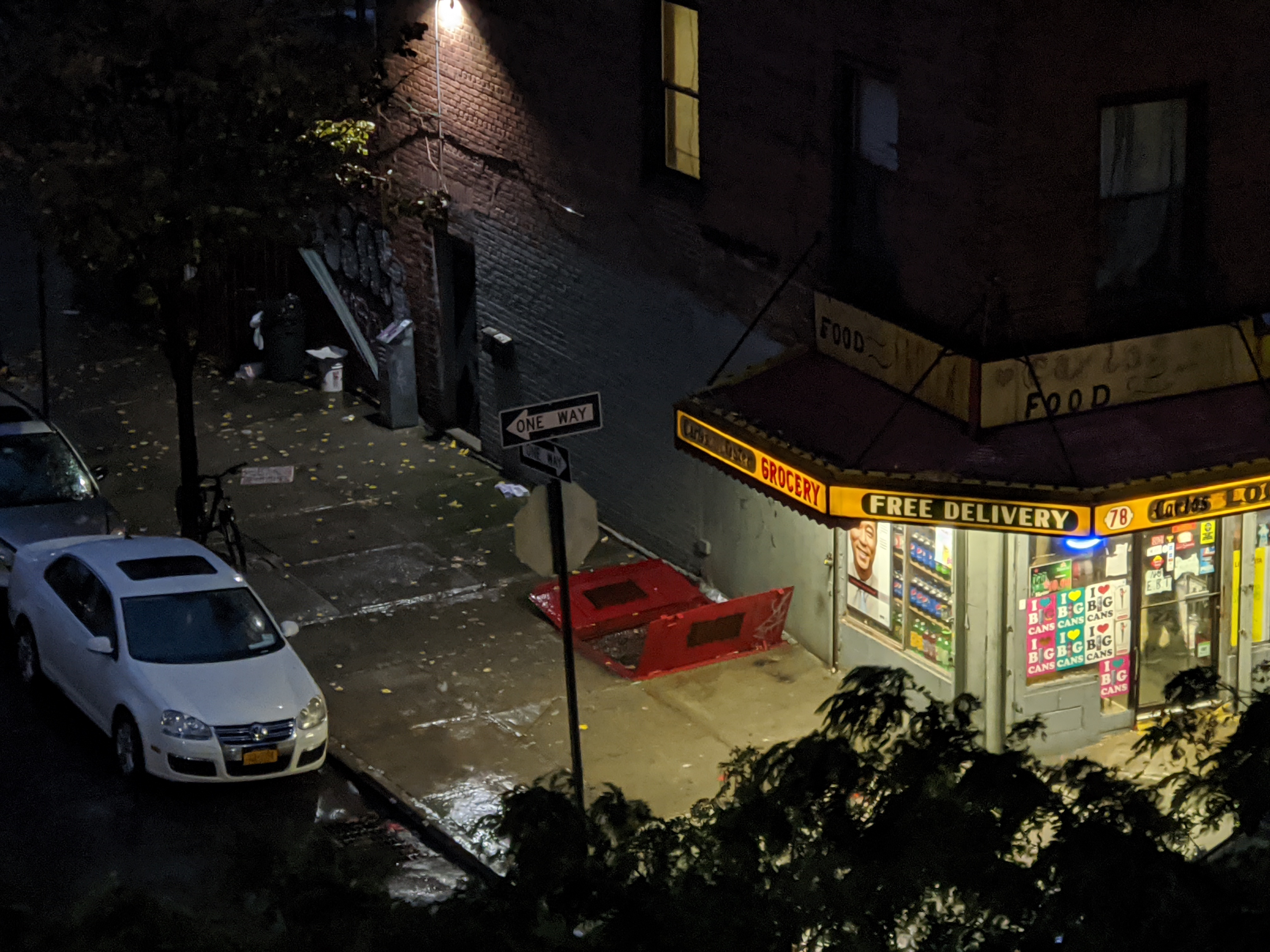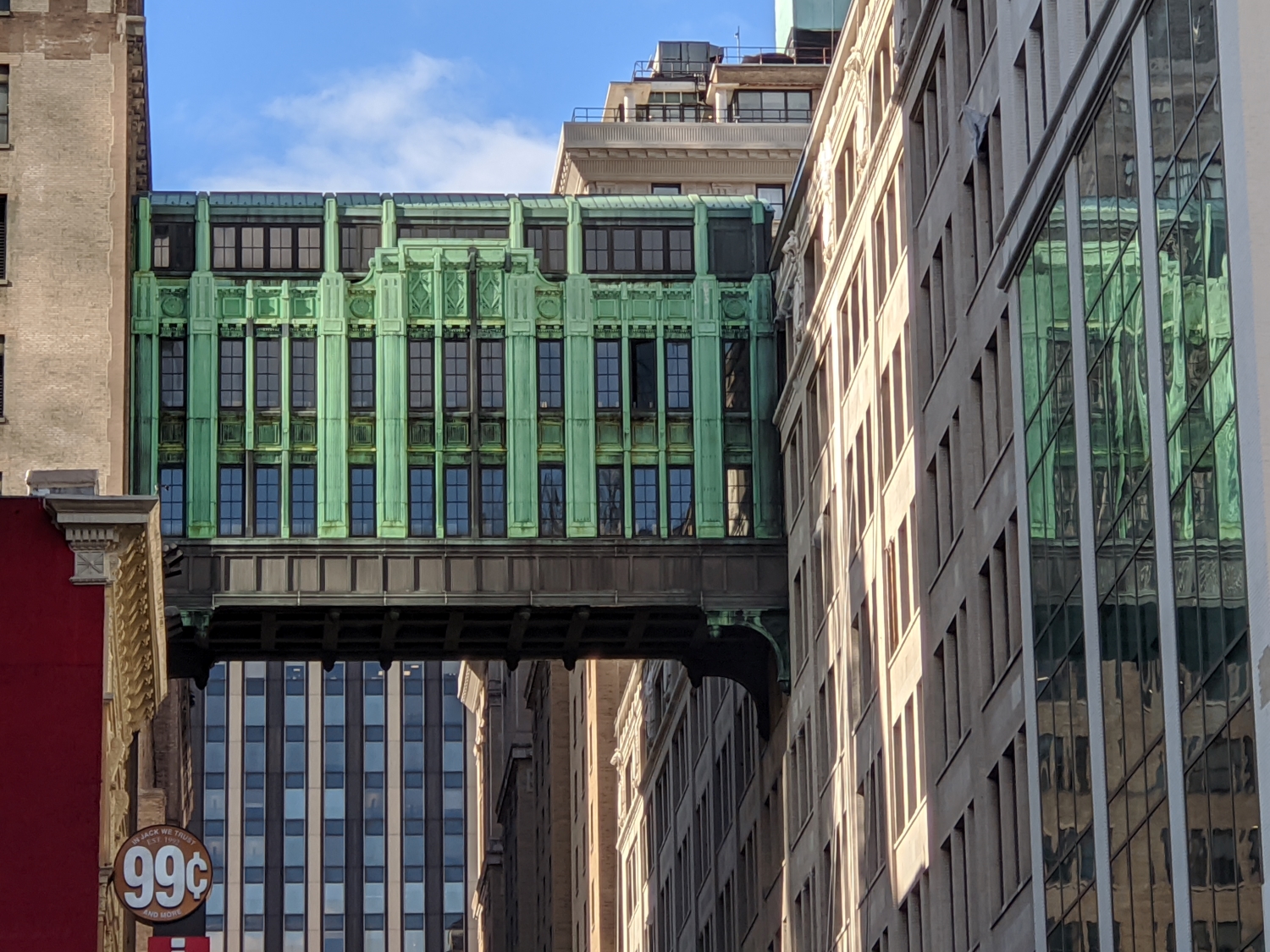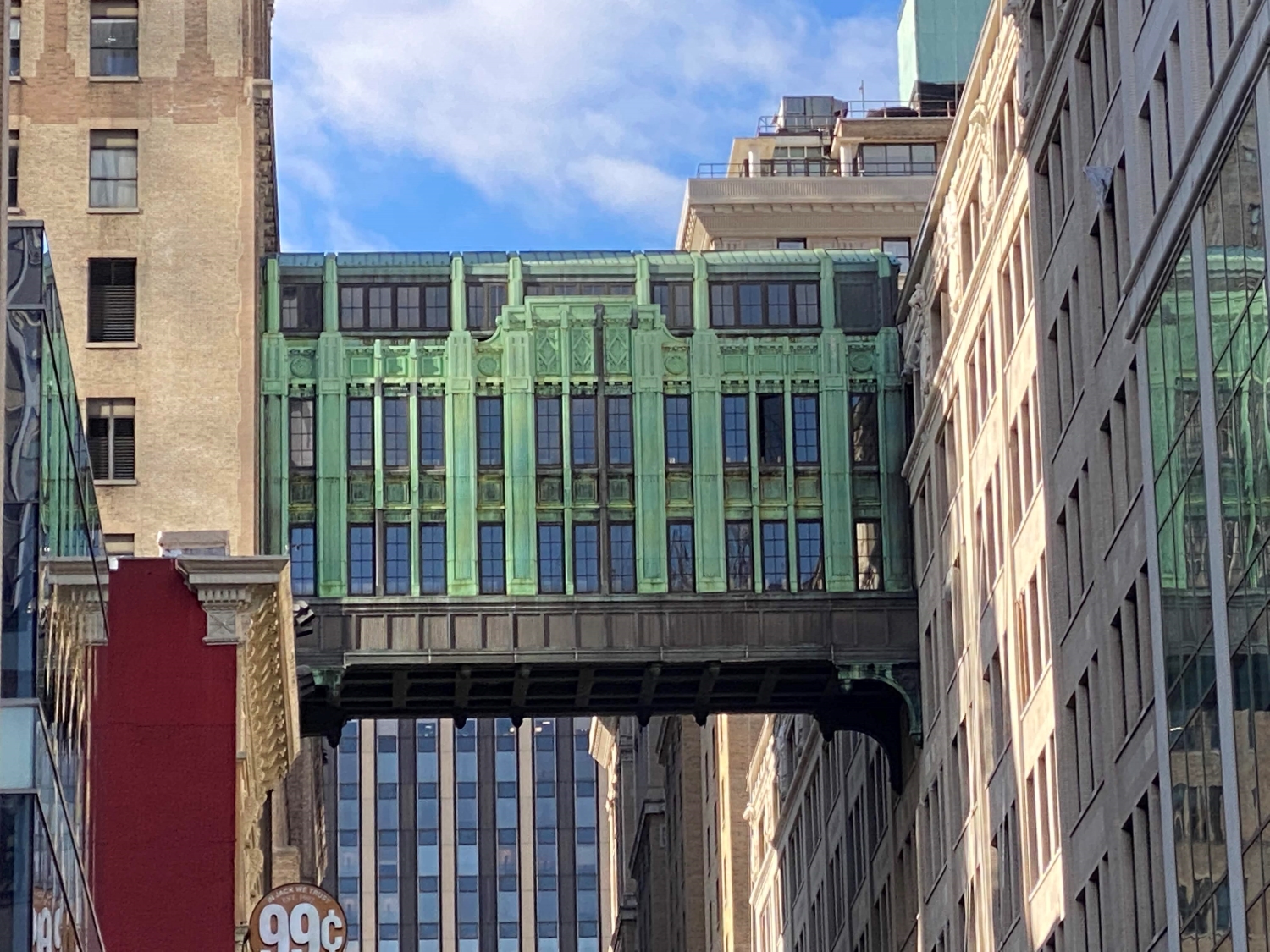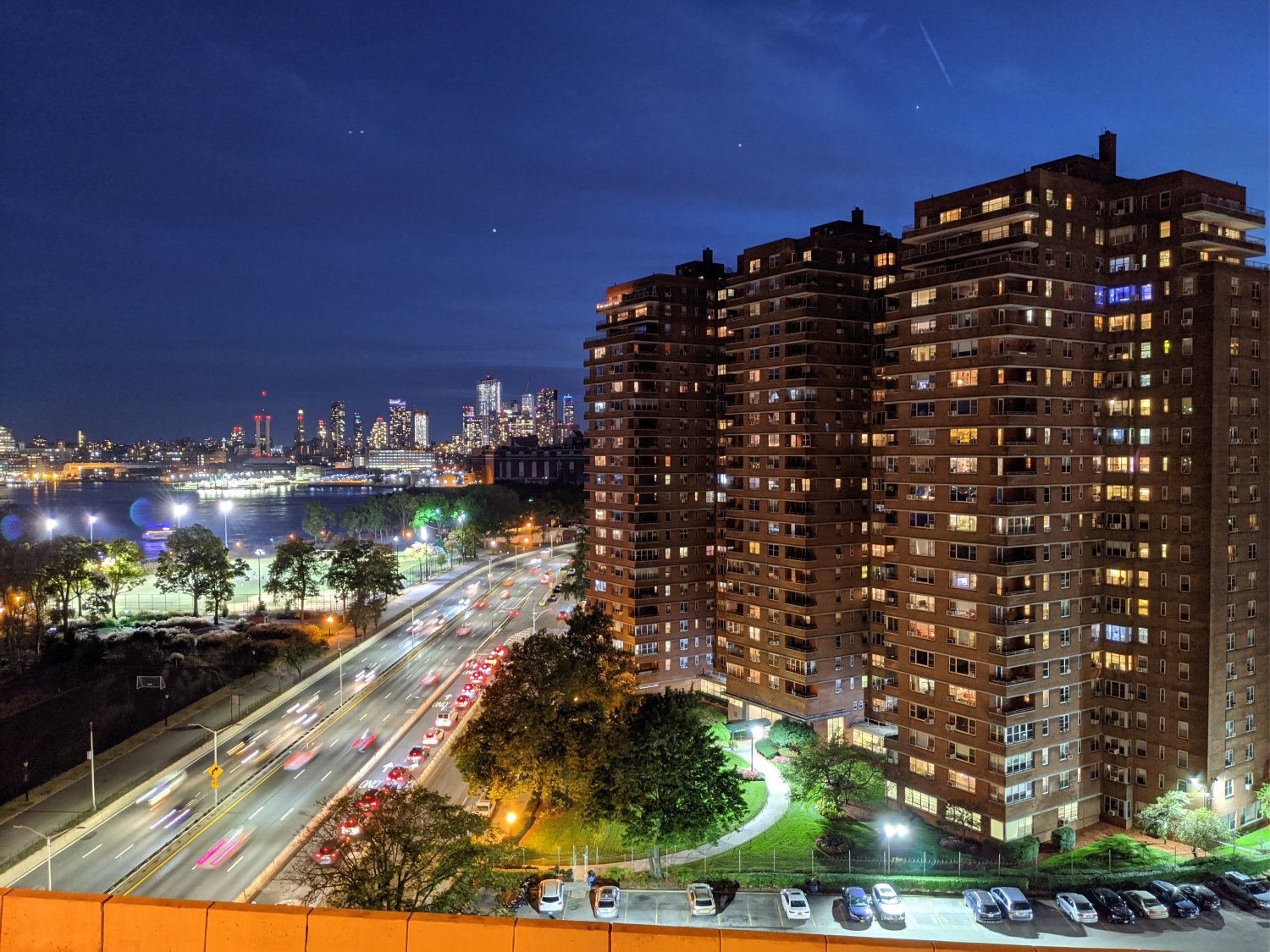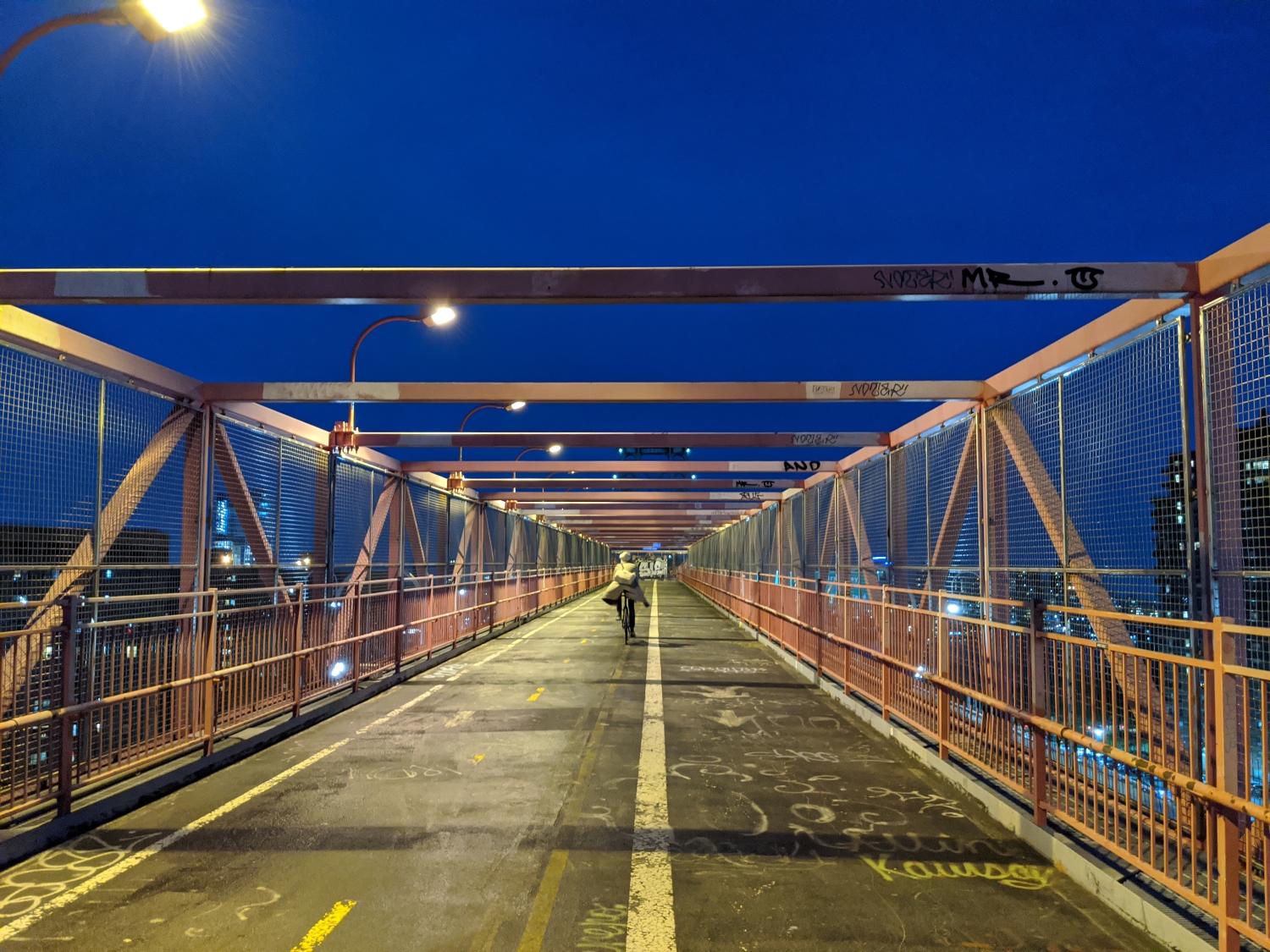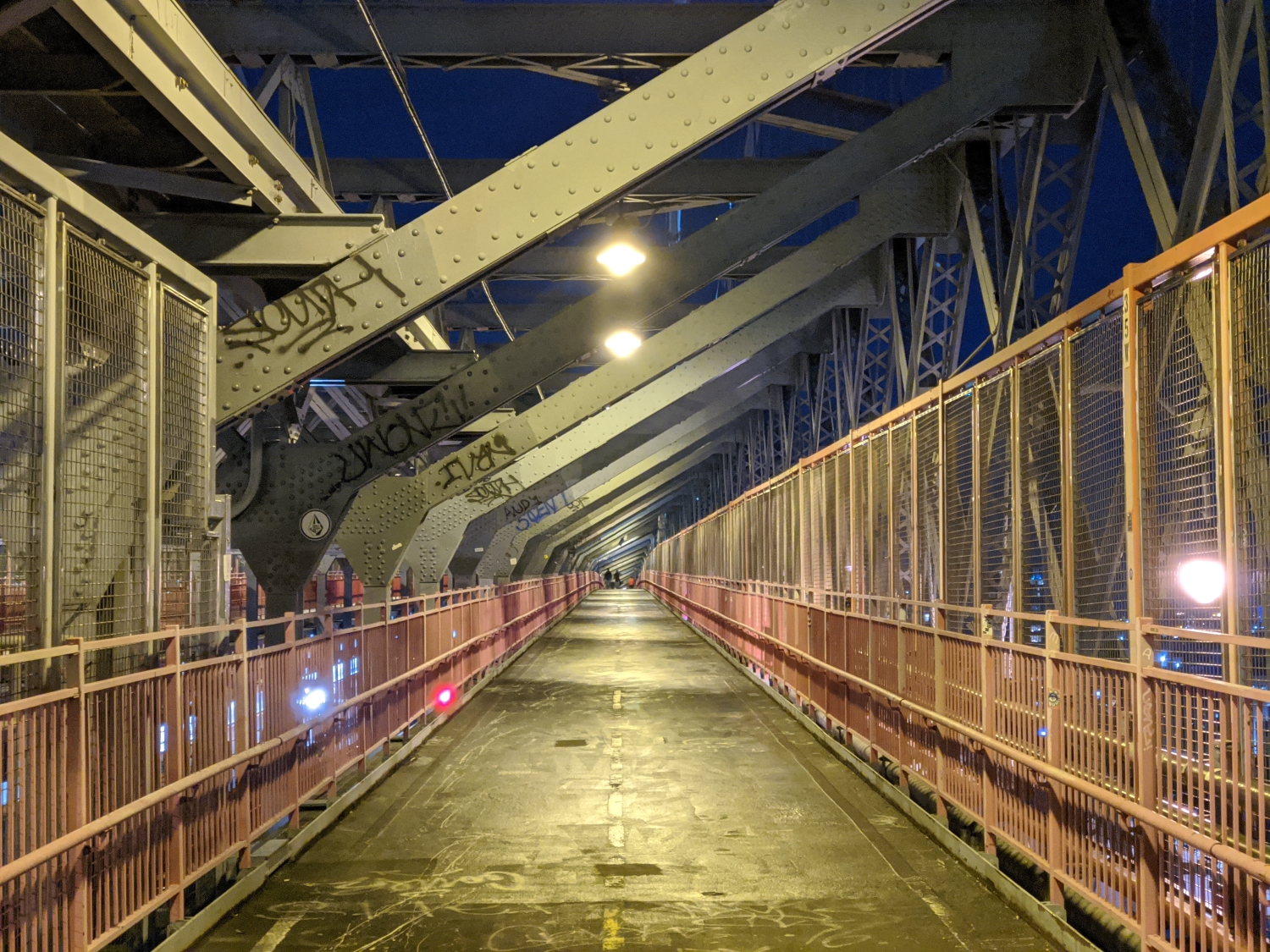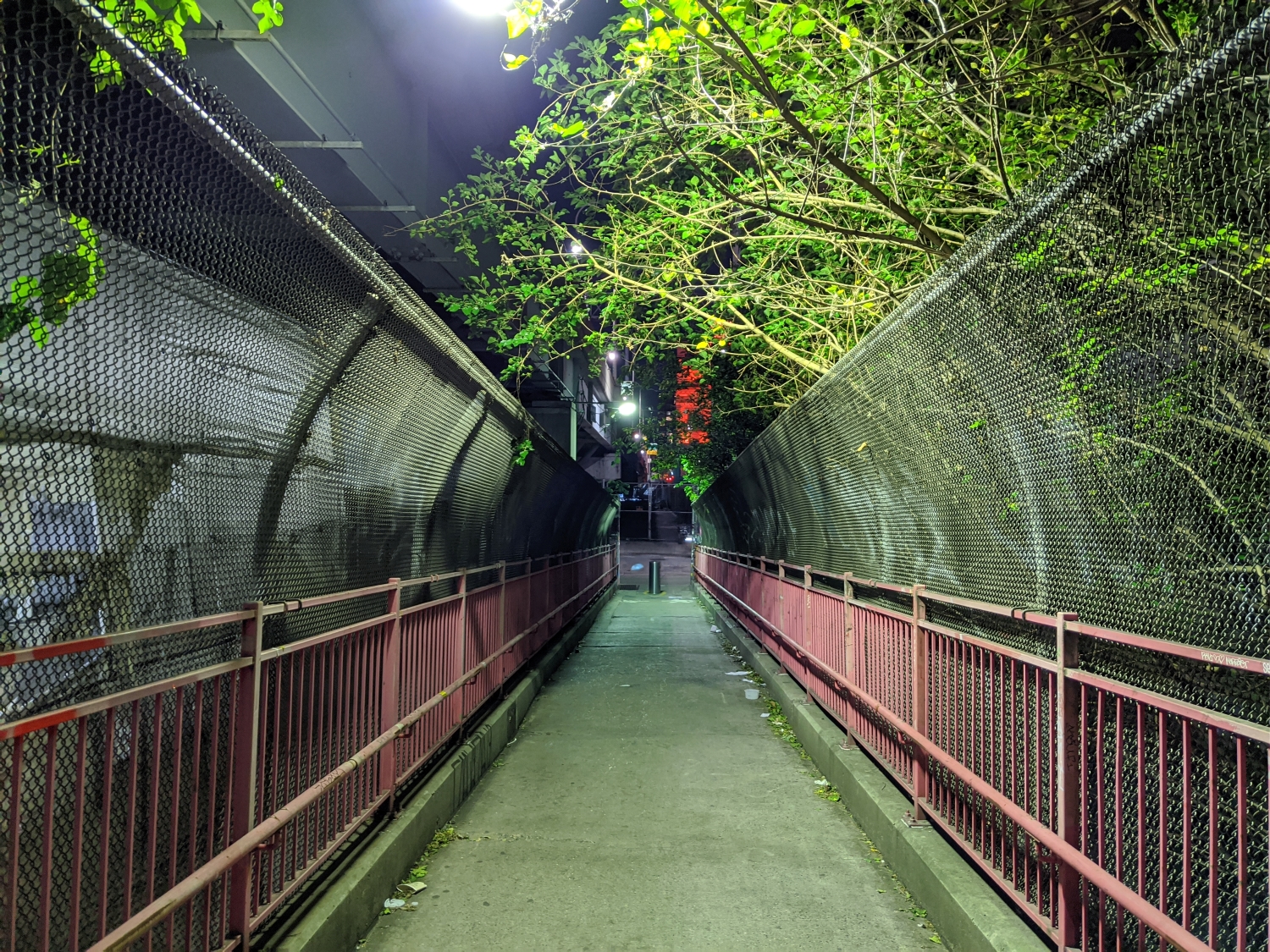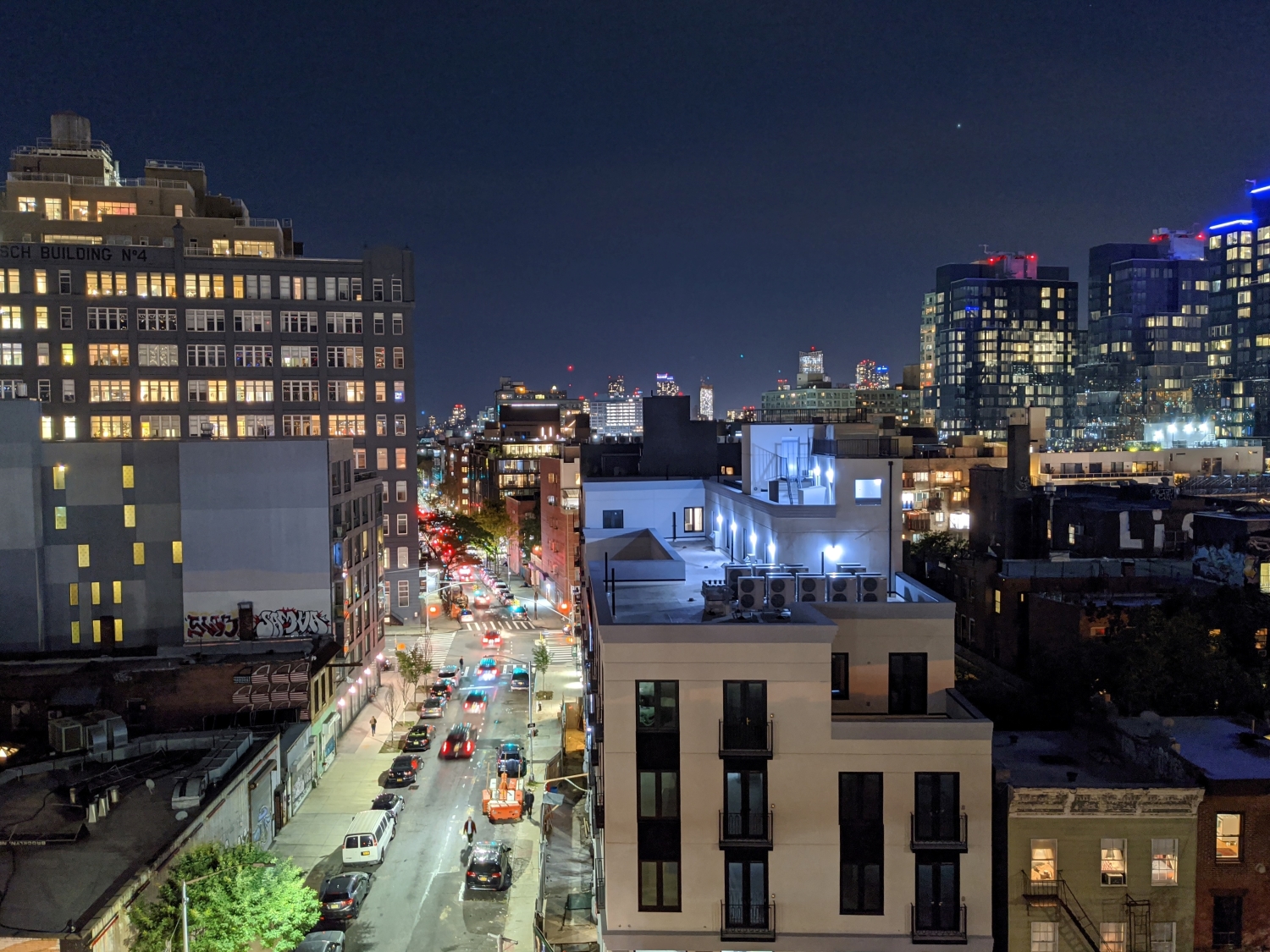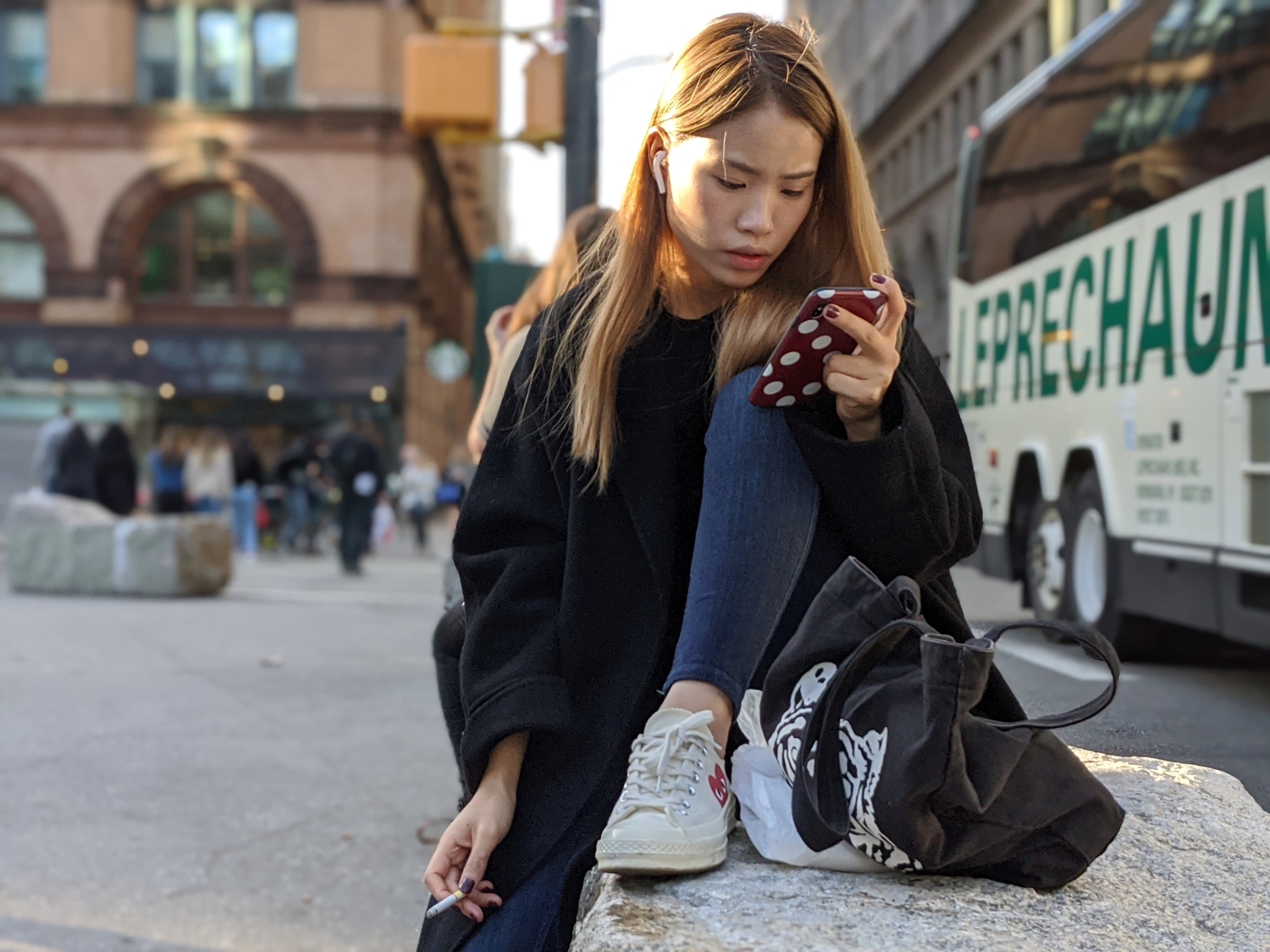- Excellent cameras
- Great performance
- Bright, sharp, and smooth 6.3-inch screen
- Face Unlock is fast
- Genuinely helpful, smart software
- Battery life isn't great
- Barely any apps support Face Unlock
- Paltry 64GB of storage
The Google Pixel 4 XL was released over six months ago — a few lifetimes in smartphone years. Since then, we’ve been dazzled by the Galaxy S20 and the OnePlus 8 Pro, and distracted by talk of a Pixel 4a and 5G phones. Does the Pixel 4 XL still hold up? Should you hold out for a 5G model? Let’s find out.
Want a smaller phone? Check out our Google Pixel 4 review, where we take a close look at the 5.7-inch model.
A minimalist and striking design
I’ve been reviewing Google’s Pixel phones since they launched back in 2016, and there have been two constants: a killer camera and an insufficient battery. This theme continues with the company’s latest, the Google Pixel 4 XL. It’s fantastic in almost every department, from an excellent screen to brilliant software, but the battery still trails the competition. It’s not bad enough to put me off from using the phone completely, but power users beware. This phone will struggle to last you a full day. There’s a lot to enjoy before that last battery percentage point slips away, though. Let’s take a closer look.
I’m a sucker for contrast, bright colors, and minimalist designs, which means the Pixel 4 XL is precisely up my alley. I spoke to the designers about the process of redesigning the phone — this is the first major redesign of the Pixel line — and I’m happy with the changes made.

Gone is the line on the back of the phone that used to separate two different textures, which also means there are no longer two textures on the back. Instead, this two-tone design is achieved using the sides of the phone; there’s a black band around the edges, which helps mask some components like the USB-C port, the speaker grill, and the SIM slot, but it also helps frame the rear panel, making it stand out. I also love the texture of this black band as it feels like you’re touching a sturdy eggshell.
The back uses Gorilla Glass 5, which has us wondering: Why don’t more phone makers use Gorilla Glass 6? Does it come at a premium too dear to afford? Regardless, it’s cleaner than ever before, especially since there’s no longer a fingerprint sensor, but there’s now a “Pixel square,” which is what the designers call the camera module. Unlike the iPhone 11 Pro, where the triple-camera system distinctly stands out, Google masked the lenses with a black filter, making the square module itself bolder and more pronounced. Paired with the black band around the edges, it’s easy to recognize this phone, and the accented color of the power button adds a bit more visual flair.
I can’t stop staring at the Pixel 4; it’s beautiful, and the design actively makes me want to show it off.
I’ve heard others call the design bland — sometimes even ugly. I disagree, clearly, but you can’t deny it’s distinctive. I was taking photos with it at a dog park in Manhattan, and three people approached me at separate times asking whether I was using a Pixel 4.
If you’re going to buy one, go for the Clearly White or the Oh So Orange colors (the latter is a limited edition), because the Just Black is just too plain. Worse yet, the black is the only one with a glossy glass texture on the rear, whereas the other two colors opt for a matte glass. The matte texture feels smooth to the touch and has the added benefit of hiding smudges and fingerprints. The same can’t be said of the glossy black option, which, on top of this, is a dust magnet.
I can’t stop staring at the Pixel 4. It’s beautiful, feels fantastic in the hand, and the design makes me want to show it off.
A 90Hz screen
Google has put a bigger emphasis on the screen’s look with the Pixel 4 XL than it did on last year’s Pixel 3 XL, which has a dreadful notch that looks hideous. This time, there’s a sizeable bezel at the top and a slimmer one on the bottom, which isn’t terribly modern but acceptable; it’s easy to forget about once you start using the phone.

The other problem Google solved is the screen’s brightness. I have trouble reading the Pixel 3 XL’s screen in sunny conditions, but that’s no longer the case on the Pixel 4 XL. Is it brighter or more bezel-less than the Samsung’s Galaxy Note 10 Plus? No, but I haven’t had much trouble here despite this.
The 3,040 × 1,440 resolution is sharp and blacks are beautifully deep, though colors aren’t as saturated as they are on Samsung’s phones. The 6.3-inch screen size also doesn’t feel too big, though I do have large hands.
The big screen is ideal for watching movies and shows, especially thanks to HDR10 support. Shows like Disenchanted and Peaky Blinders look crisp with vibrant colors that pop, though ultra-dark scenes are admittedly not as easy to see as they are on the Galaxy Note 10 or iPhone 11 Pro.
The screen’s spotlight feature is the 90Hz refresh rate, like we’ve seen on the OnePlus 7T, and it’s fantastic. This means you’re seeing 90 frames per second (FPS), which is more than the traditional 60FPS on most smartphones. The Pixel doesn’t always refresh at 90Hz, however. It sometimes refreshes at the typical 60Hz refresh rate, if screen brightness is low. This strange fact undercuts what should’ve been one of the phone’s standout features.
Because the smaller bezel is slimmer than its predecessor, the front-facing speaker has been moved to the bottom edge. It’s a shame, but thankfully audio still sounds good and can fill a small room without sounding too distorted at high volumes. There’s no headphone jack, so if you’re in the market for wireless earbuds, consider Google’s Pixel Buds 2.
Face Unlock is great
It took me a day or two to get used to the loss of the fingerprint sensor on the back of the Pixel 4 XL. I didn’t just use it to unlock the phone, but also to swipe down on it to pull down the notification drawer. While I do miss this function, I also appreciate Google’s addition of Face Unlock. It’s part of the reason why the bezel on the top of the screen is so big: There are a variety of sensors, including Google’s Soli technology, which the company has been working on for several years.

Soli uses radar to identify 3D objects, and on the Pixel 4 it’s used to recognize when your hand is approaching the phone, so it can prime up the Face Unlock camera to unlock the phone quickly or lower the volume of calls and alarms when your hand nears the phone. Handy! You can also use it for gestures to control some functions of the phone, but we’ll get to that soon.
Face Unlock is snappy and accurate, and I love that it goes straight to the home screen instead of requiring a swipe up. There are times when I need to tap the screen to make sure the camera is looking for my face, but otherwise, I haven’t had trouble using it to access the phone.
Android has a new BiometricPrompt API so apps can target it to support fingerprint sensors and facial recognition systems for devices running Android 9 and Android 10, and it took some time for developers to add support. At launch, I complained that there were barely any apps that support it; today, most major apps do, including banks like Citibank and American Express, passwork keepers like LastPass and 1Password, shopping apps like Dashlane and Venmo, and more. If you’re curious, Android Central keeps a pretty comprehensive list.
Another issue with Face Unlock was just recently resolved: At launch, Face Unlock could unlock even if your eyes were closed. That’s a security concern, since someone can easily take your phone and point it at your face to unlock it, even if you close your eyes to stop it. The April 2020 security update adds the option to require eyes to be open. There is one quirk with Face Unlocked that still lingers, however: There’s no option to add an alternate face or look, which is something you can do on Apple’s iPhone with Face ID. I know a colleague that’s using the Pixel 4, and she’s having a hard time getting it to identify her face after putting on makeup.
Helpful gestures
I mentioned the Soli technology earlier — well, it’s a sleeper hit. Having it turn down the volume as I approach the ringing phone, whether it’s during an alarm or phone call, is great, but I’m an even bigger fan of Motion Sense. This new feature lets you wave your hand left or right above the phone to snooze an alarm, silence a call, or even switch between tracks while listening to music.

At launch, Motion Sense on the Pixel 4XL was incredibly limited, although Google said it was exploring other types of gestures it can incorporate to add further value. Speaking to other reviewers, I feel like I’m in the minority, but I find Motion Sense works well for me, and I’ve been using it to dismiss alarms in the morning just by waving my hand. I also love using it to switch tracks as I work and listen to music; I can do all of this without having to pick up the phone, and that’s pretty great.
In March, Google added the ability to pause and resume music playback, but that’s it. What Motion Sense needed at the time — and still desperately needs — is more gestures and actions. Can you use it to cycle through photos after casting them to a Chromecast-enabled TV, for example? Nope. There are a lot of potential use cases for it, and I do hope Google follows through on enhancing the functionality further instead of simply abandoning it like many of its other projects. There is a game called Headed South that supports this feature, and it’d be cool to see it adopted in other apps if Google opens up the API.
A tale of two cameras
Google has long held firm that it needs only one camera to deliver excellent photos, drawing on its expertise in computational photography, as other manufacturers continue to add multiple cameras for versatility. That’s starting to change, as the Pixel 4’s 12.2-megapixel main lens with an f/1.7 aperture is now paired with a 16-megapixel telephoto lens (f/2.4), which offers up 2× optical zoom. Despite this, Google continues to show us that you don’t need 48-megapixel cameras to produce stunning photos, which is what most Android manufacturers are veering toward.
But still, Google should have taken Apple’s route and added a triple-camera system here, because I’ve never felt as though the zoom capabilities on Pixel phones were lacking. Google debuted a feature on the Pixel 3 called Super Res Zoom, which uses artificial intelligence to clean up digitally-zoomed photos, delivering quality that’s surprisingly comparable to telephoto shots from other phones. It would have been really nice to pair this with an ultra-wide-angle camera for more varied shots. Ah, well. I’ll have to hope the Pixel 5 comes with this kind of setup. Rumor has it it will.
The image sensor for the main lens is the same as the one on last year’s Pixel, except the aperture is slightly wider, so it should capture better low-light photos, and there’s improved dynamic range. The camera app also feels far snappier than ever before.
The telephoto lens does help ensure optimal quality for zoomed-in shots, but we’ve seen telephoto lenses on phones for a long time now — couldn’t Google at least have opted for a 3× optical zoom lens, like on Huawei’s P30 Pro? As the smartphone market develops, this sticks out as a sore spot: The Huawei P40 Pro comes with a 5× optical zoom that leaves the Pixel 4 XL in the dust. It’s a shame.
Regardless, the quality looks good, and unlike some phones, Google’s excellent Night Sight mode works with the telephoto lens, meaning you’ll get good quality photos, no matter the time of day. As you can see below, it edges out over the iPhone 11 Pro and Samsung’s Note 10 Plus at 5× digital zoom, with slightly stronger details and more depth.
There’s a particular type of look Google’s Pixel phones capture — lots of contrast as well as cooler and darker tones. It’s a style I’ve always enjoyed, but it’s not for everyone. You might prefer the brighter and warmer photos from the iPhone 11 Pro, for example. Nevertheless, I think the latest iPhone generally does edge out the Pixel 4 in image quality and versatility (the extra ultra-wide-angle lens helps), though that’s not always the case. There are times when the Pixel 4 snaps a much more pleasing photo with better detail, so it’s quite a close competition.
There are several improvements that make the camera experience better, though. First is Live HDR+, which lets you see what the photo will look like after it’s been processed — before you even tap the shutter button. It’s handy, because I don’t need to wait a few seconds to see what the result will be, and I can re-frame the photo if needed.
The new dual-exposure mode also offers more creative control, letting you adjust shadows and brightness before snapping a photo. There’s also learning-based white balance, which attempts to identify the scene you’re in and apply true-to-life colors in all photo modes, though results in darker scenes still tend to be best in Night Sight mode.
Speaking of which, Night Sight mode has some of the most notable improvements. Night Sight takes multiple images at different exposures and stacks them for a more detailed and brighter low-light photo. Colors are still a little over-saturated, but it continues to impress, delivering stunning photos from the darkest of scenes. Even crazier, if you have a tripod, point the phone at the sky and Night Sight mode will trigger “Astrophotography mode,” which will set an exposure time that can go on for as long as four and a half minutes.
You can take some breathtaking photos like the one below, shot by my colleague in Scotland. You can see my attempt in the gallery above, which I shot in New York City with its heavy light-pollution, but it’s still an amazing photo considering the normal camera delivers a blotchy mess with no details.

Portrait Mode is now slightly better, too, and while there are improvements in the blur application around a subject over the Pixel 3’s performance, there’s still lots of room to grow. You can notice some areas of hair around my dog and other people can look a little messed up in some photos, so you’ll want to be conscious of the background when you’re shooting portraits. The less happening in the background, the better.
These results are still some of the best you’ll be able to get from a smartphone, rivaling those captured on Apple’s iPhone and Huawei phones.
Google’s Pixel 4 XL has an 8-megapixel front camera with an f/2.0 aperture, and it snaps some excellent selfies, especially in Portrait mode and Night Sight mode. Unlike the Pixel 3, which had two cameras on the front so you could switch between a wide and a normal lens, the only lens on the Pixel 4 XL is a wide lens, so you can still capture a lot in the scene behind you, or snap group selfies without struggling to fit everyone.
- 1. Pixel 4 XL Night Selfie
- 2. Pixel 4 XL Portrait Selfie
- 3. Pixel 4 XL Selfie
The Pixel 4’s camera has improved, perhaps not significantly over its predecessor, but in the right areas that help make it one of the best camera phones to buy right now. One thing to note, Google no longer offers free, unlimited storage of full-resolution images to Google Photos. You can still upload your photos for free at a high resolution, just not at the original resolution.
The latest software: machine learning FTW
The next best part of owning a Pixel phone is the software. Naturally, the phone is running the latest version of Android 10, with up-to-date security as well. It’s a huge perk because, as Google develops Android, Pixel phones are among the first to get updates, which means new features and improved security. Google’s promising this kind of support on the phone for three years, which is more than almost all Android phones.
If you’re the sort that installs beta software, one perk of a Google-built gadget is the ability to install the latest developer build of Android — right now that’s the first beta of Android 11. No, it won’t have a fun name like Jellybean or Gingerbread, but it will bring new features. We’ll learn more at Google I/O shortly; for now, you’re fine with the existing OS.
Android 10 has great features like a system-wide dark theme, an improved gesture navigation system, as well as more transparency about what apps are accessing your location data and other sensors on the phone. You can read about all Android 10’s best features if you’re looking for more details.

What keeps me coming back to Pixel phones, outside of the camera, are several of the helpful features that are powered by machine learning. Now Playing is still present, so the phone can tell you the name of songs playing in your surroundings (even without an internet connection); then there’s Call Screen, which screens potential robocalls so you don’t have to talk to a telemarketer. The Motion Sense gestures also fall into this category of helpful features that make a small impact on my day-to-day use of the phone.
A new app called Personal Safety offers up peace of mind, allowing the phone to alert your preset emergency contacts in the event of an emergency, and the Pixel 4 can even detect car crashes through sensors on the phone. It can then place calls to emergency services and send your location, in case you’re incapacitated. Helpful indeed, though I can’t exactly test it to see how well this all works.
My favorite new addition is the Recorder app, which can transcribe interviews in real-time. It uses on-device machine learning, so no data is sent to Google and you don’t need an internet connection for it to work. The transcribing isn’t perfect, but it’s quite good and excellent for people like me that do a lot of interviews and hate the manual transcribing process afterward. This app made its way to Pixel 3, Pixel 3a, and Pixel 2 phones in December.
Live Caption is yet another one of these additions that I never thought I’d need to use. It automatically generates captions for any video with audio, and all of this happens on the device. I’ve used it when I’m on the subway and don’t want to put on my earbuds, but want to understand what’s going on in a video — Live Caption’s mostly accurate captions saved the day.
In a December “Pixel feature drop,” Google improved some of the Pixel 4 XL‘s best features, including the A.I.-powered Call Screen, background blur in photos, and Duo video calling. It’s nice to see these features continue to improve.
Google Assistant continues to dazzle
What’s also impressive is the new Google Assistant, which used to run on algorithms that required more than 100GB of storage, now shrunken to under 500MB. That means it’s faster, it can work on-device more often, and it doesn’t need an internet connection for some tasks, like opening an app or setting a timer.
Not only does the UI look significantly nicer, taking up less space on the screen, but the best addition is Continued Conversation. It’s a feature available on Google Nest devices, and it lets you keep talking to Assistant without having to keep triggering it. You’ll see the bottom of the phone glow with Assistant’s colors after you perform a query, indicating that it’s still listening, in case you want to ask something else. It’s excellent and actually makes me use Assistant even more, especially with the Active Edge, the “squeeze the phone to trigger Assistant” feature that’s still available on the Pixel 4.

Assistant has improved in many other ways. For example, now if you’re in an app like Google Maps, you can simply squeeze the phone and ask Assistant to “Search for nearby restaurants”; it will automatically run the query through Maps instead of Assistant. Looking at a photo you like? You can ask Assistant to send it to someone in your contacts, and you can even respond to texts as they come in just by triggering Assistant and saying, “Reply to John,” before dictating your response.
I’m using Google Assistant a lot more now, which I’m sure makes Google happy as it gets more data on me, though there are more robust options to control how much of your data is stored. But in the end, I’m using Assistant because it’s genuinely helpful, and that’s more than I can say about most other voice assistants.
Snappy performance
The Pixel 4 XL has 6GB of RAM and is powered by the same chip inside most 2019 Android flagship phones: the Qualcomm Snapdragon 855. In December, Qualcomm unveiled the next-gen 865 chip, which you’ll find in the OnePlus 8, the Galaxy S20 series, and some Chinese phones from Xiaomi and Oppo. If you’re looking for the latest and greatest, this ain’t it right now — but that doesn’t really matter. The phone had no trouble handling any of the apps I typically use, opening them up quickly. Switching between apps and even multitasking is a snappy affair.
Here are a few benchmark scores:
- AnTuTu 3DBench: 362,158
- Geekbench 5 CPU: 606 single-core; 2,056 multi-core
- 3DMark Sling Shot Extreme: 4,007 (Vulkan); 4,564 (OpenGL)
By comparision, here’s some numbers from the Galaxy S20:
- Geekbench 5: 905 single-core; 2,753 multi-core
- 3DMark Sling Shot Extreme: 5,198 (Vulkan)
The Pixel 4 XL’s scores aren’t too different from other phones using the same processor, like the Samsung Galaxy Note 10 Plus, and it remains in the upper echelon of powerful smartphones. But the more modern chip is clearly faster (and obviously, substantially more expensive). Oh, and the iPhone 11 Pro still maintains a sizable lead.
Games like PUBG: Mobile, Alto’s Odyssey, Pako: Forever all performed without a hitch. You won’t have any trouble with performance on this phone.
I’m not a fan of the amount of storage you get for the base Pixel 4 XL: 64GB. That’s far too little for a $900 phone, especially when $350 phones like the Nokia 7.2 offer the same amount. Google, you need to bump up storage options and make 128GB the standard.
A lacking battery
All the amazing features on this phone are overshadowed by the battery Google decided to pack inside. At a time when most Android manufacturers are tossing in batteries bigger than 4,000mAh, Google’s use of a 3,700mAh cell feels like a joke. It can get you through a workday with medium to high use, but I frequently would hit 30% around 5:30 p.m., sometimes even less. It’s not bad for light to medium users, but not so great for power users.

If I wanted to extend my night out and hit a restaurant or bar, my phone would die around 9:30 or 10 p.m. if I didn’t have a portable battery on me. I’m not sure why Google can’t figure out the battery life on its Pixel phones, because it’s been a problem for me with every single Pixel phone I’ve ever reviewed. Toss in a bigger battery, Google! Do what Apple did this year and make your phone thicker. It’s not hard. I’ve hit 20% around midnight on the iPhone 11 Pro Max thanks to its amazing battery life, and I wish Google’s phone could do the same.
Thankfully the problem can be mitigated by using a Qi wireless charger by your desk as you work or through a portable battery pack, but it’s not great that you have to go to these lengths.
In our standard video playback test, where we play a 1080p YouTube video on max brightness over Wi-Fi, the Pixel 4 XL lasted 9 hours and 31 minutes. That’s respectable, but falls behind competitors like the iPhone 11 Pro, which scored 12 hours and 30 minutes, and the OnePlus 7T Pro, which lasted 12 hours and 19 minutes.
I’ve hit 20% battery around midnight on the iPhone 11 Pro Max. I wish Google’s phone could do the same.
It’s a shame Google didn’t opt to upgrade its fast-charging tech, either. It still uses the Power Delivery 2.0 standard instead of the newer PD 3.0; you can fully charge the Pixel 4 XL from zero to 100% in around an hour and a half, but you don’t get the burst of juice when you initially plug it in that you get with the Galaxy Note 10 Plus, which is helpful in a pinch.
Price, availability, and warranty information
The MSRP on the Pixel 4 XL is $900, but if you want the smaller Pixel 4, it costs less at $800. Both phones have been available from all major U.S. carriers and several retailers since October 24, 2019.
However, the phones are currently on sale. The Pixel 4XL is $600 and the Pixel 4 is $500. This doesn’t necessarily make them a better deal than at release because, compared to other phones, the hardware is now a bit out of date. Still, the price cut drops these phones into the mid-range market. You may also want to check out our compilation of the best Google Pixel deals for more discounts on the Pixel line. Or if you’re considering other brands, we’ve also got you covered with the best smartphone deals.
Google offers a standard limited warranty that protects the phone from manufacturing defects one year from the date of purchase.
Our take
Do you want the hottest, the fastest, the newest? There’s always something better, and today, the Pixel 4 XL is none of those things. That said, it might still be the phone for you. When the Pixel 4 XL came out, there was no Android phone I’d rather use than the Pixel 4 XL, because of its helpful, smart software and killer camera. The 90Hz screen helps, too. But that does mean sacrificing the all-day battery life found on competitors — and being tethered to a portable battery pack.
That said, the fastest, newest, and hottest are often the most expensive as well. The Galaxy line starts at $1,000 and climbs from there, for example. The Pixel was originally listed at $899, but Google dropped the price to $799, and thanks to a variety of Pixel smartphone deals, you can find it today for around $500 — an excellent value for a still very impressive device.
Is there a better alternative?
Yes. You should most definitely consider the OnePlus 8, which is superior to the OnePlus 7T in every way. It’s got a rockstar 4,510mAh battery, warp speed charging, gets updates fast, and has more customizable software. And it at $700, it’s a real steal — though it has a smaller screen.
Beyond that, the iPhone 11 Pro Max has significant merits, such as even better performance, a versatile camera, and stunning battery life, but it costs substantially more. Read our Pixel 4 XL and iPhone 11 Pro Max comparison review and see how these flagships from Google and Apple stack up against each other.
If you don’t care much for the camera on a phone, Samsung’s Galaxy Note 10 and Note 10 Plus will satisfy in every way, and can still deliver solid, varied shots … if you can find one at a bargain.
How long will it last?
The Pixel 4 XL will last you two to three years, if not a little more before the battery starts to depreciate. It has an IP68 water-resistance rating, so you don’t have to worry about dips in the pool, but it’s wrapped in glass so you’ll still want to nab a case.
Should you buy it?
Yes. The Pixel 4 XL might not be the best Android phone of 2020, feeling somewhat dated and being hampered by its sub-par battery life, but it still kicks butt, and you can find it discounted for a real bargain today. It’s a solid choice for Android fans seeking a great phone without a flagship price-tag.
Editors' Recommendations
- A new Google Pixel Tablet is coming, but it’s not what you think
- Google is finally fixing an annoying issue with its Pixel phones
- Does the Google Pixel 7a have wireless charging?
- Does the Google Pixel Watch have fall detection? Not yet, but it’s coming soon
- Is the Google Pixel 7 waterproof?








